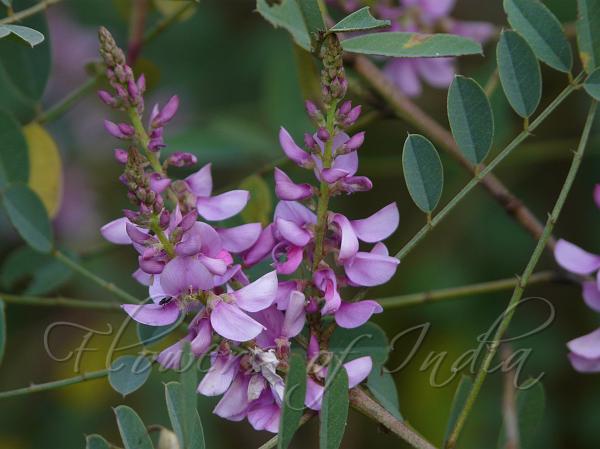|
| Cassia Indigo |
|

|

| File size | 365185 |
| Original date | 2/16/08 4:04 PM |
| Resolution | 2048 x 1536 |
| Flash | Flash did not fire, auto |
| Focal length | 82.8mm |
| Exposure time | 1/160s |
| Aperture | 4.2 |
| Focus Distance | |
| Metering Mode | Multi-segment |
| Camera make | Panasonic |
| Camera model | DMC-FZ18 |
| Sensor type | OneChipColorArea |
|
|
|
|
Photo: |
Botanical name: Indigofera cassioides Family: Fabaceae (Pea family)
Synonyms: Indigofera pulchella, Indigofera leptostachya
Synonyms: Indigofera pulchella, Indigofera leptostachya
Cassia Indigo is an erect shrub, 1-1.5 m tall. Leaves are compound 7-15
cm long, with 11-21 leaflets, 1.1-2.4 cm long, 7-15 mm broad, oblong to
elliptical, blunt, truncate to slightly retuse, apiculate, velvety on both
sides. Stipules are 2-4 mm long, deciduous. Inflorescence is a 5-17 cm
long raceme, covered with sterile scales at the base. Bract are 2-10 mm
long. The stalk carrying the raceme is 1-2 mm long. Sepal cup is 2-3 mm
long, teeth nearly equal, 1-2 mm long. Flowers are bright pink, fading to
violet, shaped like pea flowers. Vexillum is 1.2-1.8 cm long. Fruit is
2.4-4.3 cm long, 4 mm broad, straight, hairless, 8-12-seeded.
Cassia Indigo is native to the Indian Subcontinent to China and Indo-China.
It is also found in the Himalayas, at altitudes up to 2000 m.
Flowering: March-May.
Medicinal uses: A decoction of the roots is used in the
treatment of coughs. The root is dried, ground into a powder and applied
externally in the treatment of pains in the chest.
A decoction of the roots is used in the
treatment of coughs. The root is dried, ground into a powder and applied
externally in the treatment of pains in the chest.
Medicinal uses:
 A decoction of the roots is used in the
treatment of coughs. The root is dried, ground into a powder and applied
externally in the treatment of pains in the chest.
A decoction of the roots is used in the
treatment of coughs. The root is dried, ground into a powder and applied
externally in the treatment of pains in the chest. | Identification credit: Dinesh Valke | Photographed at Mahabaleshwar, Maharashtra. |
• Is this flower misidentified? If yes,